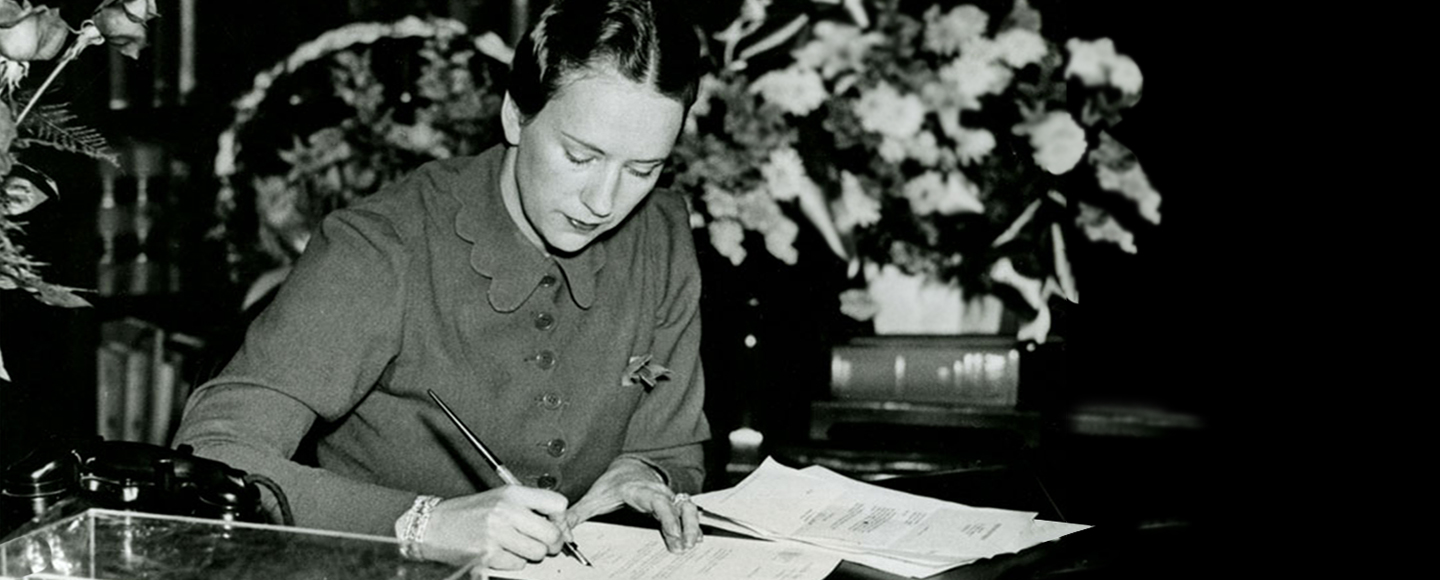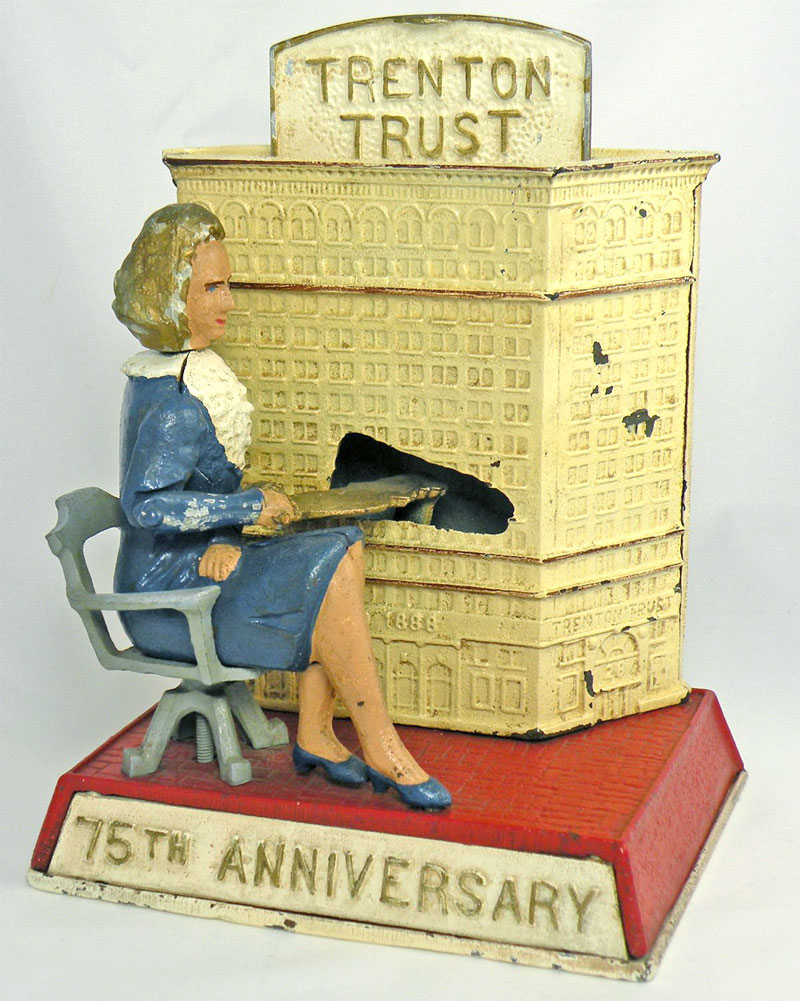The first woman to run a major U.S. bank

The woman who would one day be known as one of the most powerful women of the century wasn’t even allowed to attend college during the day. Instead, Mary Gindhart Herbert Roebling, a merchandising and business administration student at the University of Pennsylvania’s Wharton School during the 1920s, studied at night. Having been married at 17 and widowed by 19, she was determined to learn the skills necessary to make her way independently in the world.
Roebling had worked at a Philadelphia investment firm. In 1933, she married Siegfried Roebling, whose business interests included two of the leading companies in Trenton, New Jersey: John A Roebling & Sons wire rope plant and Trenton Trust Company (today part of Wells Fargo). When Siegfried Roebling died suddenly, he left her with a large holding of Trenton Trust Company stock. Roebling’s father and father-in-law encouraged her to take a shot at running the bank. Despite her limited business experience, the two men assured her that she had plenty of the most important qualification for a banker: common sense.
Roebling became the first woman to serve as president of a major commercial bank in America. Under her leadership, Trenton Trust’s assets rose from $17 million to $137 million over three decades. Along the way, Roebling became a role model for growing ranks of women bankers.
Improving the banking experience
On January 21, 1937, Roebling’s first day as bank president, at the age of 31, reporters crowded around her desk. Roebling was not interested in being a media spectacle. Instead, she wanted to improve the banking experience for Trenton Trust’s customers.
Under Mary Roebling’s leadership, Trenton Trust’s assets rose from $17 million to $137 million over three decades.
The first thing she did was take down the walls that separated the bank president from customers and staff. She successfully steered Trenton Trust through the final years of the Great Depression. In the post-World War II era, she introduced innovative public relations and merchandising practices such as walk-up teller windows, credit cards, drive-in banking, and established branches at commuter rail stations. A 1952 magazine article profiling Roebling and her accomplishments referred to her in its headline as a “banker in high heels.”
Trenton’s No. 1 booster
Throughout her career, Roebling remained a strong supporter of working women and equal pay for equal work. She firmly believed in the economic empowerment of women and spoke out as a critic of the banking industry’s underestimation of female customers, saying in a 1965 speech, “The American woman has almost unbelievable economic power, but American women … do not use the influence their economic power gives them.”
In 1972, Trenton Trust merged with National State Bank of Elizabeth, New Jersey, and Roebling remained chair of the consolidated bank until her retirement in 1984. Widely known in banking circles coast to coast and in the New Jersey business community as Trenton’s No. 1 booster, Roebling’s many civic pursuits included finance chair of the Maternal Health Center in Trenton, leadership roles in state commissions on unemployment compensation and historic preservation, and leadership roles with the American Institute of Banking. She also served on a number of committees dedicated to the welfare and training of military service members, funded scholarships for top female ROTC graduates, and received prestigious national awards for her civilian service to America’s military.

Roebling had become the first female governor of the American Stock Exchange in 1958, and two decades later served as board chair of the Women’s Bank of Denver, the first nationally chartered bank founded by women. Late in her career, Fortune magazine called her one of the 50 most powerful women of the century, a recognition far beyond Time magazine’s description of her in 1937 as “probably the prettiest bank president in the land.”
Roebling died in 1994, after a half-century career demonstrating the potential of women in executive roles, but also the advantages that convenient banking services brought to the everyday lives of customers.